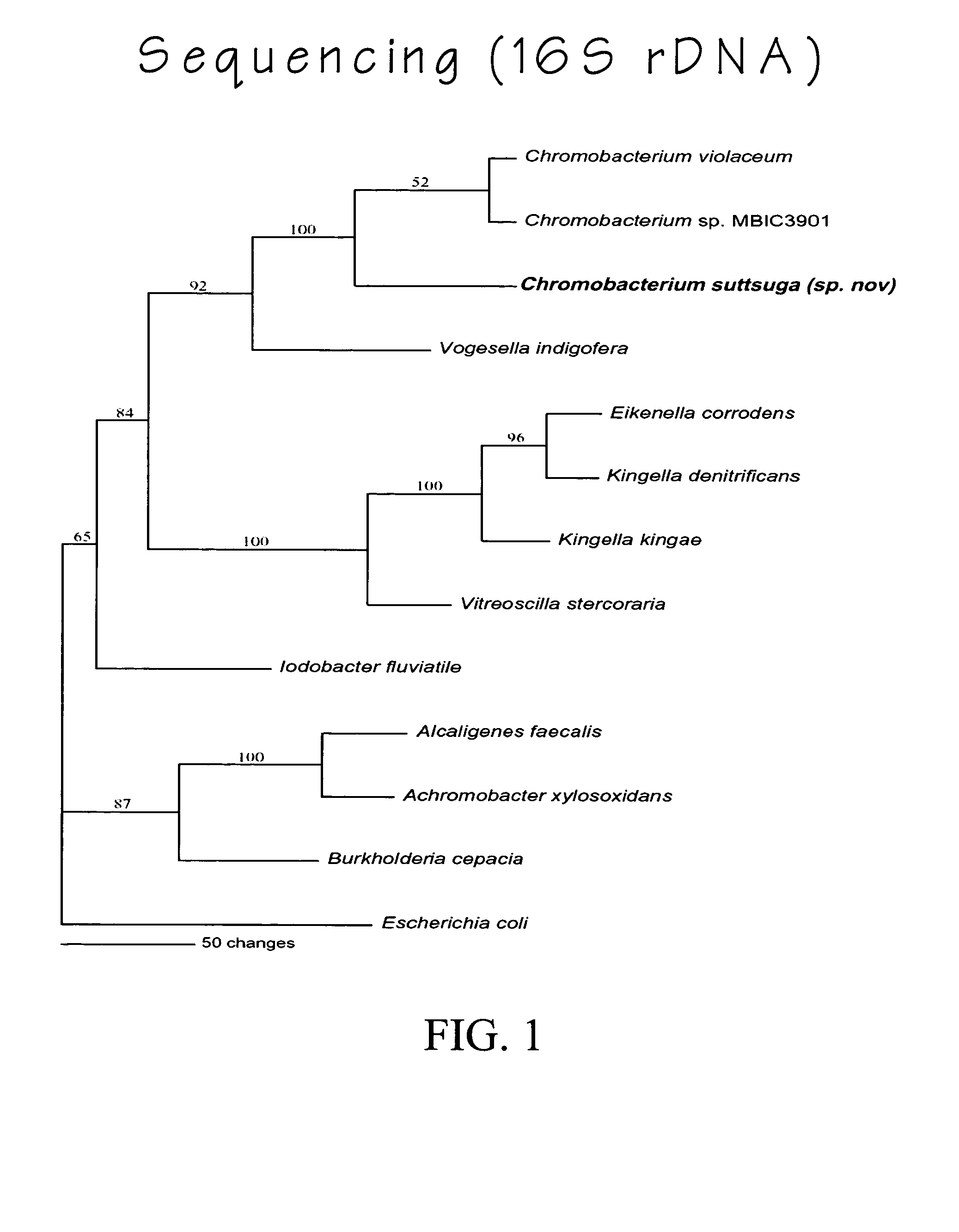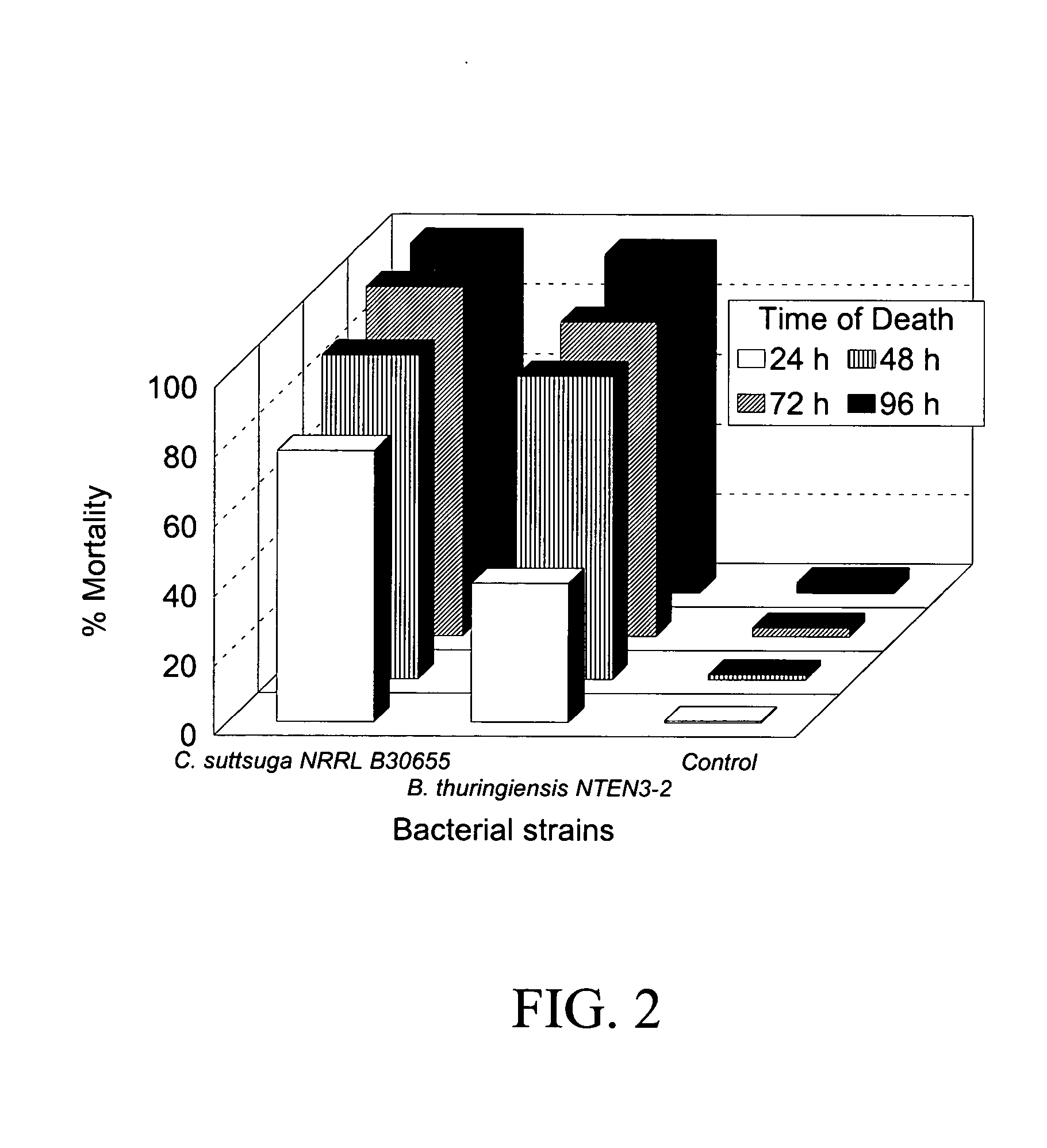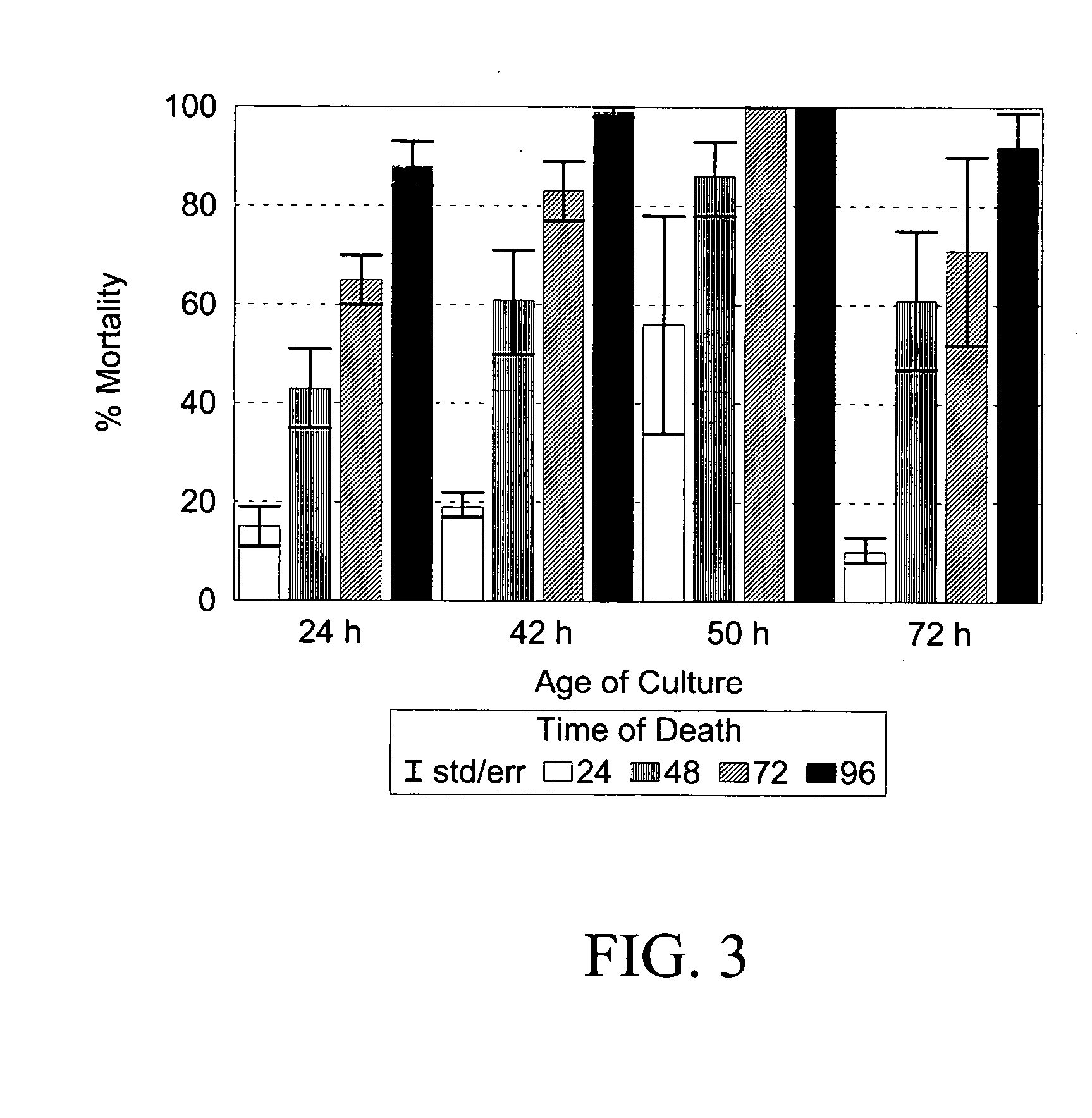Chromobacterium suttsuga sp. nov. and use for control of insect pests
a technology of chromobacterium suttsuga and insect pests, which is applied in the field of new species of chromobacterium bacterium and use for biocontrol of insect pests, can solve the problems of reducing crop quality worldwide, affecting the quality of crops, and causing most significant damage, so as to improve resistance management and reduce pesticide us
- Summary
- Abstract
- Description
- Claims
- Application Information
AI Technical Summary
Benefits of technology
Problems solved by technology
Method used
Image
Examples
example 1
[0065] The following example describes the origin, isolation, culture conditions, and characterization of Chromobacterium suttsuga sp. nov.
[0066] Purple colonies of the bacterial strain of the invention were isolated from soil rich in hemlock leaves from a forest in western Maryland USA during a project looking for insect pathogens in nematodes. The pH of the soil was 4.7, and the moisture content was 46.6%. The original soil sample had a total aerobic microbial cell count of 1.75×106 cfu / g of soil, about half of which were purple colonies on RM (½L, Atlas, 1997). The colonies were plated on L-agar.
[0067] One purple colony was subsequently cultured on L. The strain was obtained in biologically pure form by dilution plating on L.
[0068] Further description of culturing of the strain of the invention: Bacteria were cultured in L-broth (Miller, 1972) or on L-agar. We also used RM medium (Martin et al., 1998), which contained half the nutrients of L, for bacterial recovery from insect...
example 2
[0076] The following example describes the rDNA sequence of the strain of the invention and determination that the strain is a new species of the genus Chromobacterium, designated as Chromobacterium suttsuga sp. nov. [0077] rDNA analysis was carried out as follows: For polymerase chain reaction (PCR) and sequencing, DNA was purified from strain Chromobacterium suttsuga NRRL B-30655 by standard methods (Current Protocols in Molecular Biology, Unit 2.4). 16S rDNA was amplified using primers universal to prokaryotes, R16F0 and R16R1 (Lee et al., 1993), and sequenced using Big Dye terminator chemistry on an ABI Prism Model 310 (PE Applied Biosystem, CA, USA) using these primers, and new primers chromo16SF1 (5′-AACGCTGGCGGCATGCTTTACAC-3′) (SEQ ID NO:2) and chromo16SF2 (5′-GAGGAAATCCCGCTGGTTA-3) (SEQ ID NO:3) designed based on 16S rDNA sequence of C. violaceum (GenBank Accession M22510). The resulting strain Chromobacterium suttsuga NRRL B-30655 full 16S sequence is shown in SEQ ID NO:1. ...
example 3
[0081] The following example describe the further characterization of one or more insecticidally-active metabolites obtained from Chromobacterium suttsuga sp. nov.
[0082] To further characterize the one or more Chromobacterium suttsuga NRRL B-30655 toxins we filtered the aqueous supernatant through 100K and 10K polysulphone filters (VectaSpin 3, Whatman International Ltd., Maidstone, England) and evaluated their toxicity against 2nd instar Colorado potato beetle. The filtered supernatant of Chromobacterium suttsuga NRRL B-30655 was exposed to heat (65° C. for 10 min) and protease XIV (Sigma, St. Louis, Mo.; 30° C. for 30 min) to test for toxin stability.
[0083] To obtain the one or more insecticidally active toxic agents, the strain of the invention is grown as described above. The one or more toxins are made after exponential growth ceases. For example, the strain normally grows at 25° C. and forms purple pigment in 48 hours when well aerated. This isolate is unlike the type strain...
PUM
| Property | Measurement | Unit |
|---|---|---|
| temperature | aaaaa | aaaaa |
| pH | aaaaa | aaaaa |
| temperature | aaaaa | aaaaa |
Abstract
Description
Claims
Application Information
 Login to View More
Login to View More - R&D
- Intellectual Property
- Life Sciences
- Materials
- Tech Scout
- Unparalleled Data Quality
- Higher Quality Content
- 60% Fewer Hallucinations
Browse by: Latest US Patents, China's latest patents, Technical Efficacy Thesaurus, Application Domain, Technology Topic, Popular Technical Reports.
© 2025 PatSnap. All rights reserved.Legal|Privacy policy|Modern Slavery Act Transparency Statement|Sitemap|About US| Contact US: help@patsnap.com



